 |
|
Virtual City Game: Safe driving to an assigned goal in a city by obeying traffic laws
Students: Stephen Otunba Status: Past |
| |
Our proposed VR City Game is created using a game development tool called Vizard. Vizard is a 3D development platform to build interactive and immersive 3D content. Vizard also supports numerous devices such as 3D wall, cave, gloves, haptic displays, force-feedback systems, gamepads, and joysticks. Avatars included have built-in human face, body models and an accompanying morph designer to instantly insert virtual humans into existing environments.We have created a multi user environment to allow participants in different geographical locations to connect and experience the simulation together. Participants can enter the VR game as a car avatar or human avatar and have the corresponding navigation features.

Pilot studies have been conducted with the system showing its partial success and demonstrate that collaborative learning approach we propose can succeed with smaller group sizes. A significant number of participants followed the traffic rules. Overall 24% participants did not follow any traffic rule. Interestingly the majority of users who did not follow the traffic rules were novice users. Subjective responses indicated that the Collaborative virtual environment was realistic and engaging. This environment will allow users to prepare for driving exams and we hope that it could possibly become an alternative, supplement, or replacement for the traditional driver’s handbook.
Phase 1: User studies for multi-user evacuation study
We have conducted user studies for the Multi-user city evacuation virtual environments. We conducted 40-50 sessions involving two-four users each session. Users experienced the virtual environment in one of two formats
1) Non-Immersive Environment: With desktop computer, mouse and keyboard.
2) Immersive Environment: with a head mounted display and mouse.
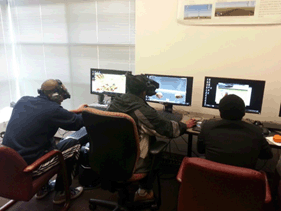 |
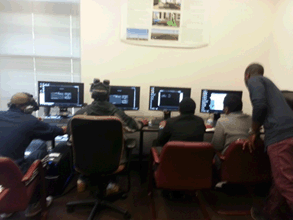 |
| Students participating in the user studies |
Students participating in the user studies in immersive environment |
We collected data during the sessions by screen capturing for evaluation. After the session, the student survey for VR environment was also administered. More than 100 respondents participated in this first phase of the user surveys. The majority (74%) of the survey respondents were male. Approximately a quarter were female. The user base for this first phase of the user study can be described as fairly experienced in gaming. The majority (70%) indicated possession of an intermediate to level of gaming experience. Approximately a third of the respondents indicated gaming experience at a novice level.
|
| |
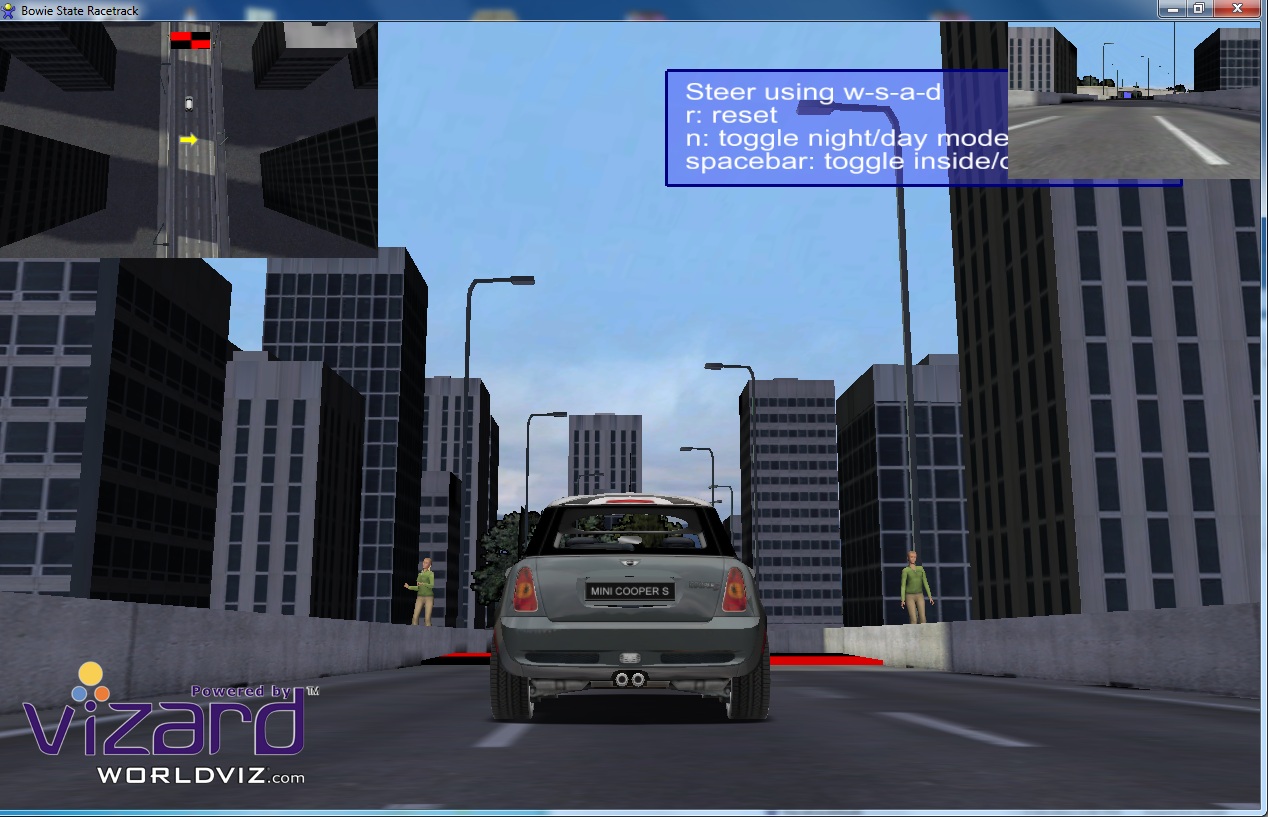 |
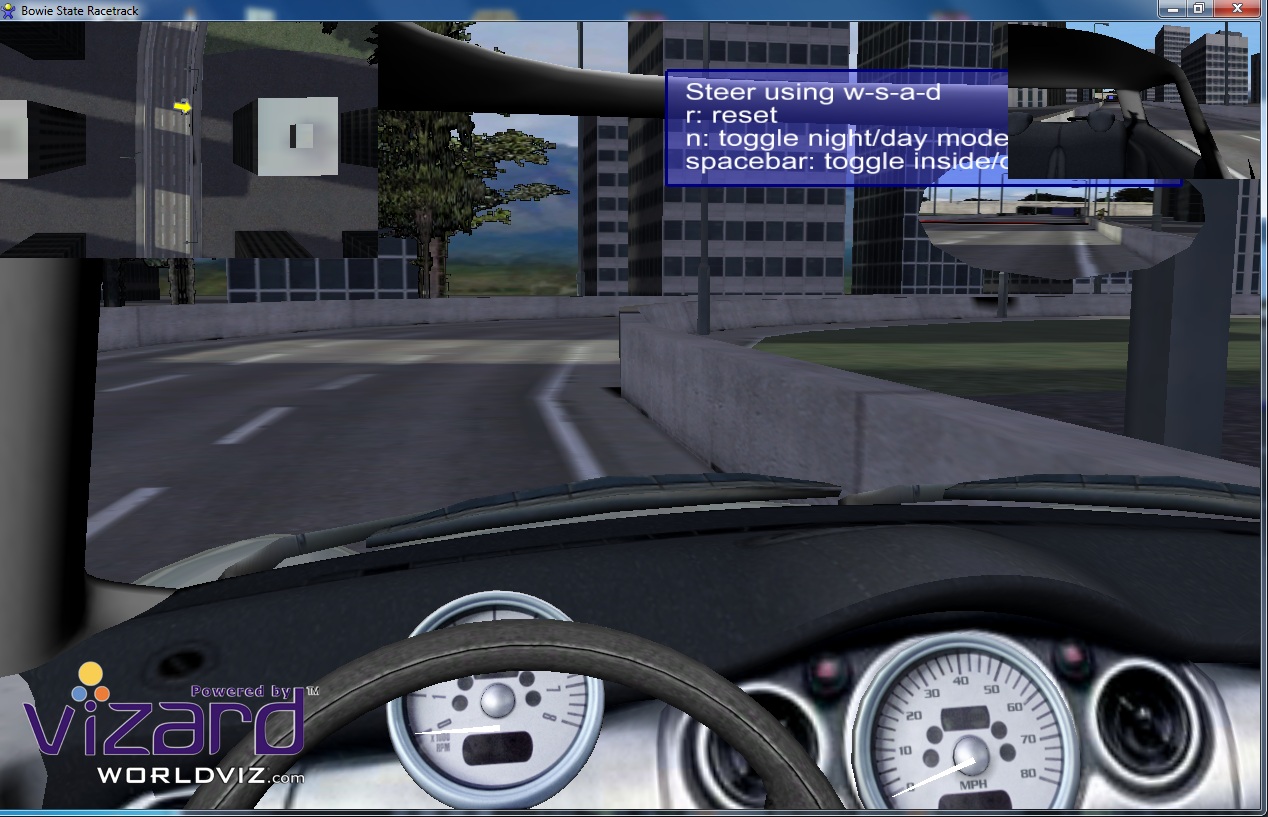 |
| |
|
|
| |
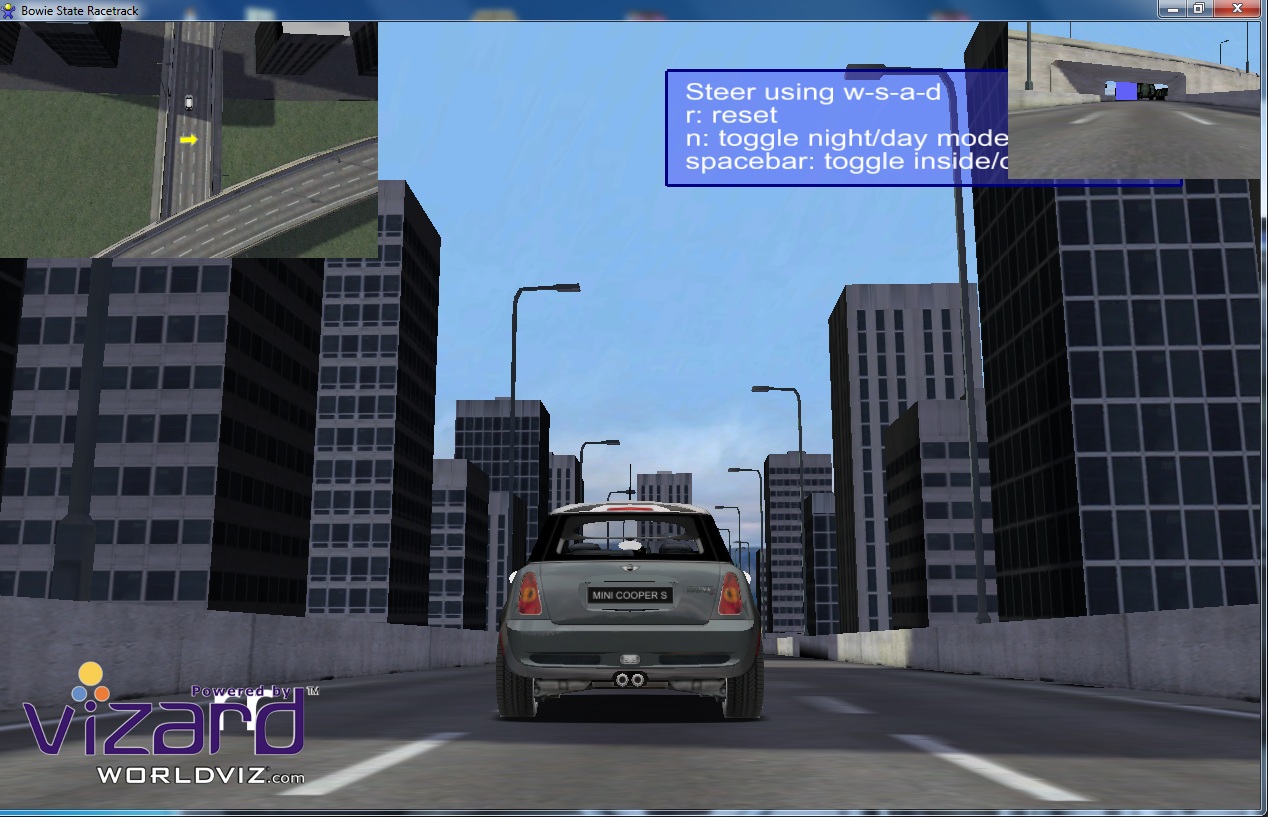 |
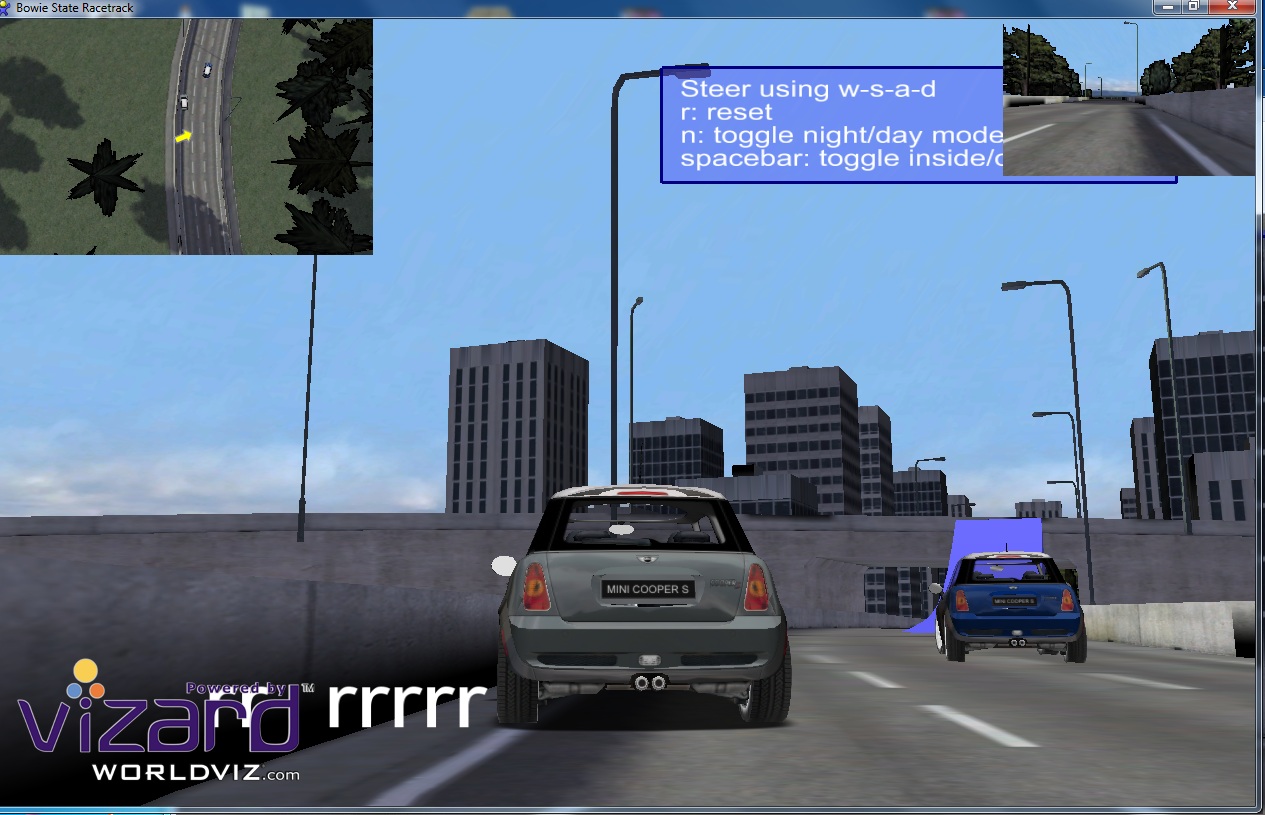 |
| |
|
|
| |
 |
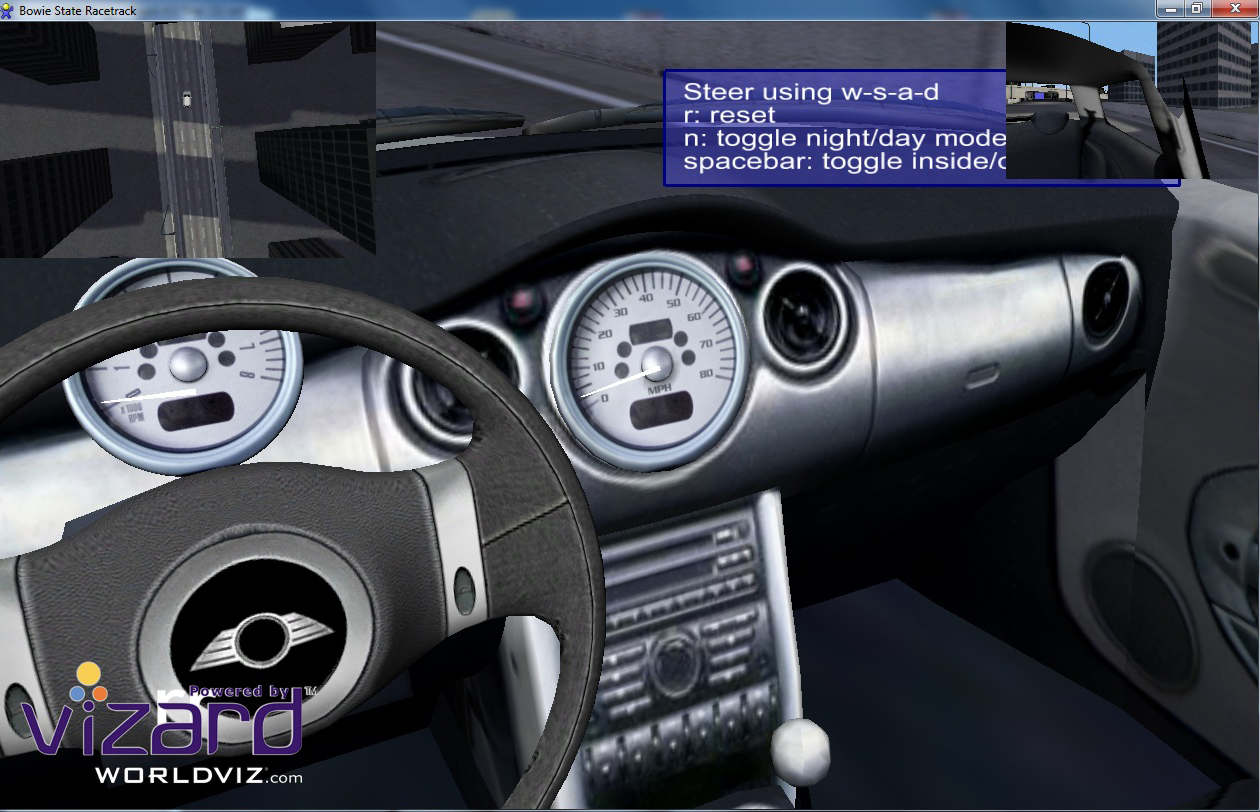 |
The limitation of our constructivist learning approach for car driving is that there were fewer interesting learning situations and there were not enough users involved in a collaborative driving place. In future we plan to develop alternate forms of guidance such as verbal and augmented graphics in the virtual city. Furthermore, audio communication is planned to be integrated into the system.
Virtual City: Crowd behavior and traffic intersection problem
Students: Stephen Otunba, Mike Tice, Jeff Ratte, and Tyreek Edwards
Status: Old
Virtual reality provides a good way of visualization of the behaviors produced by these models. We are developing a crowd behavior capability in a virtual city where there are traffic intersection junctions for people to cross over the road. We will generate a wide variety of civilian individual and group behaviors at differing levels of fidelity. In transportation, VR has the potential to model flows and driving simulations. It leads to observing built and natural environments from the driver’s perspective. Our simulation will consist of autonomous virtual human agents walking on the side walk in the virtual 3D environment. Agents will have 3D graphic body representations, which are able to perform certain low-level actions, such as playing of pre-recorded animation sequences such as gestures or walking to specified location. Similarly, there are pre-recorded animation sequences for cars moving on the road in the VR city. |
| |

|
|
| |
View from the user driving the car. |
Click Here to VIEW THE VRML PROJECT |
| |
Can be Viewed in Cortona 3 D player |
Click Here to VIEW THE VRML PROJECT 2 |
The modeling of the city was done in 3ds max and the textures were applied accordingly. Some objects such as the intersection lights and road signs were incorporated from 3d model templates from various sources. The tools used to create the virtual city were 3DS Max 2009, LightWave 3D, and VRML Pad. |
| |
 |
 |
| |
View of city with the pedestrians. The pedestrian in green is the user controlled pedestrian. |
View from the user controled car View from the user controled car |
| |
|
|
| |
|
|
Publications
- Sharma, S, "A Collaborative Virtual Environment for Safe Driving in a Virtual City by Obeying Traffic Laws", Journal of Traffic and Logistics Engineering (JTLE, ISSN: 2301-3680), doi:10.18178/jtle.5.2.84-91, pp. 84-91, Volume 5, No. 2, 2017.
- Sharma, S. and Otunba,S., “Virtual Reality as a Theme-Based Game Tool for Homeland Security Applications”, Proceedings of ACM Military Modeling & Simulation Symposium (MMS11), Boston, MA, USA, April 4 - 7, 2011.
- Sharma, S. and Shete, S., “Virtual City: A gaming tool for training and education”, Proceedings of ISCA 26th International Conference on Computers and their Applications, New Orleans, Louisiana, USA, March 23-25, 2011.
 VR LABORATORY (C) 2007-2017, ALL RIGHTS RESERVED
VR LABORATORY (C) 2007-2017, ALL RIGHTS RESERVED |
 |
|
